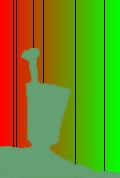 This week, it’s my The Alchemist chemistry news column that coincides with SpectroscopyNOW updates:
This week, it’s my The Alchemist chemistry news column that coincides with SpectroscopyNOW updates:
The Alchemist this week catches site through his spyglass of complex interstellar molecules with a hint of raspberry and rum, and a possible way to capture carbon usefully that doesn’t require huge energy input. Geordie scientists have discovered why a breakfast fry-up could be the optimal hangover cure, a NIST team has found a way to suppress quantum errors, and flexible concrete that heals itself has been made by US materials scientists. Finally, the publicity department at the Royal Society of Chemistry could strike gold in a major PR awards thanks to its Italian Job.
Recycling carbon dioxide – A research team in Singapore has developed an alternative to simply burying carbon dioxide captured from sources such as coal-fired power stations. Their experiments used NMR spectroscopy to track the catalytic conversion of carbon dioxide into methanol under very mild reaction conditions. (Personally, I think these kinds of efforts will never likely balance the energy/resources books and will always come out costing more than they save in terms of emissions and fuel, but an interesting reaction, nevertheless).
ELISA, meet SERRS – Surface-enhanced resonance Raman scattering could be used to quickly spot the telltale signs of prostate cancer at the molecular level, according to a British team. This is the first use of a well-known ELISA colorimetric substrate as a SERRS marker.
Polymerising phosphates – X-ray crystallography has been used to identify a novel enzyme that polymerises the essential biochemical building block phosphate in eukaryotes, which include all animals, plants, fungi, and protists. The proof of principle was obtained with yeast and could pave the way to the discovery of related enzymes in other species.
Raspberries and ultraviolet skin damage – There’s no connection between the interstellar molecules mentioned earlier that just happen to taste of raspberries and this news item about how ellagic acid found in lots of different types of fruit and vegetables can protect skin cells from the aging effects of UV-B. Other, of course, than the fruity headlines the research makes possible.
Researchers in Korea have demonstrated that the topical application of antioxidant ellagic acid, which is found in certain fruits and berries, can protect against damage to the skin caused by incident ultraviolet-B radiation. Their work suggests that the compound could help protect people to some extent from the skin-aging effects of the sun.
Avoiding scanners – Efforts should be made to avoid unnecessary patient exposure to imaging devices that use ionising radiation, according to a warning from the International Atomic Energy Agency. The Agency suggests that MRI and ultrasound should therefore be more widely used instead of X-ray based imaging.